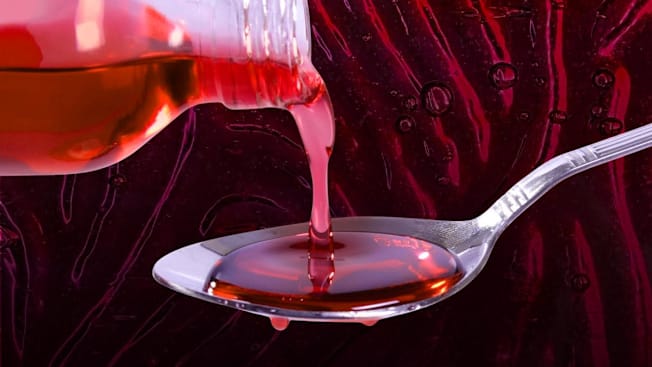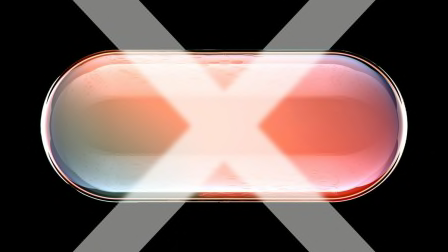What to Know About Artificial Dyes in Kids' Medication
Some parents are concerned about artificial dyes in common meds for kids, such as Tylenol and Motrin. Here's more on why, and what you can do.

Synthetic dyes—which impart a distinctly unnatural hue on a variety of candies, snacks, and drinks—have recently come under renewed scrutiny. Earlier this year, the Food and Drug Administration announced a ban on Red Dye No. 3 in food and ingested drugs, though it doesn’t go into effect until 2028. And the agency has publicly discussed phasing out other artificial dyes, some of which are already restricted or require a warning label abroad.
Studies in animals have found some of these dyes can cause cancer in rats (though the FDA says the same mechanism is not known to occur in humans). In studies of children, these dyes have been linked with behavioral changes such as hyperactivity and inattention.
Dyes aren’t just in processed foods. Some of these very same synthetic dyes are also used in certain children’s medications. So far, however, these products have escaped the same level of scrutiny that’s been leveled at kids’ foods. Here’s what to know about the dyes in kids’ medications, including how to spot them, how to avoid them, and whether you should be concerned.
Why Do Some Kids' Meds Have Dyes?
Synthetic dyes used in both processed foods and some kids’ meds include FD&C Red No. 3 and FD&C Red No. 40. (FD&C refers to the Federal Food, Drug, and Cosmetic Act.)
Which Kids' Meds Have Dyes?
Any children’s medications can contain dyes, including over-the-counter and prescription drugs, in both liquid forms and tablets. They’re particularly common in liquid medications, says Asa Bradman, PhD, professor of public health at University of California, Merced and a co-author on the 2022 study. These include pain relievers—such as non-steroidal anti-inflammatory drugs (NSAIDs)—cold and cough medicines, and antihistamines. Kids tend to get more of the dye in their system from syrups as opposed to pills.
A colored syrup is an indicator that a medication likely contains dye. If you want to double check, medication labels typically list inactive ingredients, says Thomas Galligan, PhD, principal scientist for food additives and supplements at the Center for Science in the Public Interest. Look for FD&C followed by a color and number (such as FD&C Red No. 40 or FD&C Blue No. 1).
Why Are People Concerned About Artificial Dyes?
Beyond research showing a cancer risk in lab animals, several studies suggest certain synthetic food dyes—including those used in medication—can cause short-term behavior changes in children. The 2022 review of 25 clinical trials concluded exposure to these dyes may cause or exacerbate inattention, hyperactivity, and other behavioral issues.
“Some of these effects like hyperactivity and inattention are quite severe and can impact a child’s ability to succeed in school and socially,” says Galligan. And emerging research suggests that some children may be more susceptible than others, explains Bradman—potentially due to unique physiological factors like metabolism.
“The caveat is that drugs are not processed foods; they serve a therapeutic purpose,” says Galligan. “So parents should not forgo necessary medications over concerns about these dyes.”
And unlike with food, most people take medication sporadically, which could result in a lower exposure risk. But for those who take dyed medication daily, the risk may increase. It’s not yet known whether these dyes cause chronic, long-lasting changes—or whether early exposure has a more significant or lasting impact. “I’m concerned about the long-term developmental impacts,” says Bradman. “We’ve learned from studies of long-term exposure to lead and pesticides that exposure earlier in life may alter neurodevelopment.”
Join CR's Efforts to Get Dyes out of Kids' Medicine
Learn about our new research project.
What Are the Current Laws About Artificial Dyes?
As of January 2025, Red Dye No. 3 has been banned from food and ingested drugs due to the potential cancer risk, but it may still be present in these products. That’s because manufacturers have until 2028 to phase it out.
Several states have already banned or placed limitations on the use of artificial dyes in foods—in California, for example, Red Dye No. 3 will no longer be allowed in food beginning in 2027 and six additional dyes won’t be allowed in school foods starting later that year. (Consumer Reports cosponsored the two bills that implemented these bans.)
There’s a larger federal push to ask manufacturers to phase out many of these artificial dyes from food. And there are additional efforts—primarily driven by the food industry itself—to lobby Congress to block current state laws banning dyes and leave it to the FDA, says Brian Ronholm, director of food policy at Consumer Reports. But it’s unclear whether the agency will make significant moves toward banning or restricting all of the artificial dyes that have raised concerns.
“FDA continuously monitors new scientific data and adverse event reports related to color additives,” Andrew G. Nixon, director of communications at the U.S. Department of Health and Human Services, told CR in an email.
Any restrictions on medication ingredients in particular should be phased in slowly, says Diane E. Hindman, MD, PharmD, a board-certified pediatrician and medical toxicologist, and a pharmacist at Havasu Regional Medical Center and University of Arizona Poison and Drug Information Center. Banning ingredients could affect drug availability while manufacturers create alternatives and the FDA tests them, she adds.
What Are the Alternatives?
Not all kids need to completely avoid medication that includes dye, according to Miller—especially if they only take dyed medication every once in a while or don’t display concerning behavioral changes after taking them. (Symptoms typically stop when a child stops consuming the dye, says Miller. “The literature doesn’t document a permanent behavioral change.”)
But these dyes are often relatively easy to avoid. If your child takes a dyed medication regularly and you’re concerned about behavioral impacts, you can ask your pharmacist to help you identify a dye-free version. Many common over-the-counter medications for kids come in dye-free versions, including Children’s Tylenol, Children’s Motrin, and Children’s Advil.
If your child takes a specialty medication and there’s no dye-free alternative available, consider checking with a compounding pharmacy, which can often make custom, dye-free medications. Galligan cautions that this process can be expensive and time-consuming, however.




















